May 17, 2025 | 05:42 GMT +7
May 17, 2025 | 05:42 GMT +7
Hotline: 0913.378.918
May 17, 2025 | 05:42 GMT +7
Hotline: 0913.378.918

The horse herd of the Animal Husbandry Research and Development Center for Mountainous Zone. Photo: Pham Hieu.
For many generations, the horse is a familiar image that always appears and is closely associated with the lives of Vietnamese people, especially the daily lives of people in mountainous and remote areas of the country.
Currently, mentioning the Animal Husbandry Research and Development Center for Mountainous Zone (National Institute of Animal Science) in Binh Son commune, Song Cong city, Thai Nguyen province means mentioning a unit that is storing and taking care of many of the most precious horse breeds in Vietnam.
Of which, the Center is now storing the Kabardin horse breed, originating from Russia, with a large stature, a height of 1.4–1.5 m, and a weight of 350–400 kg. Some horses even reach a shoulder height of up to 1.6m, a body length of 1.7m, and an estimated weight of 500kg. Compared to other horse breeds in Vietnam, Kabardin is three times larger.
However, practical applications show that it is impossible to bring a Kabardin horse weighing up to 500kg to the highlands to serve the people who are mostly small in stature.
Therefore, after many years of research, the Animal Husbandry Research and Development Center for Mountainous Zone used the genetic resource of the purebred Kabardin horse breed to cross with the purebred Vietnamese horse breed to create an F2 hybrid horse breed with 25% Kabardin blood.
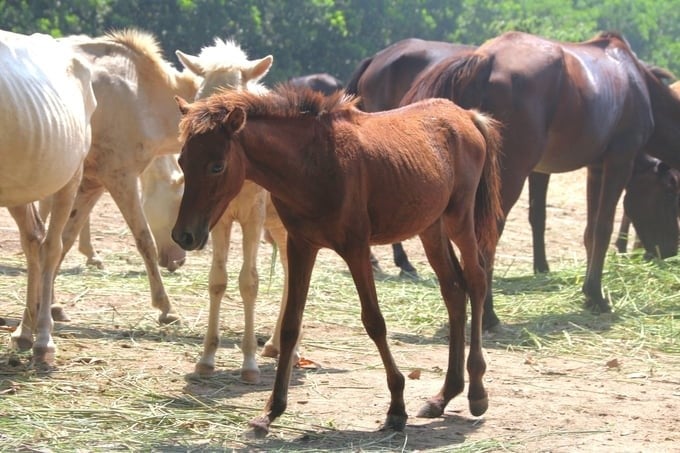
Hybrid horses with 25% Kabardin blood have a beautiful, balanced appearance, a solid, compact body structure, and a penchant for dual-purpose work—carrying, pulling, and riding. Photo: Pham Hieu.
This F2 breed has stature, health, carrying capacity, and working capacity 30–50% higher than horse breeds in Vietnam and is suitable for mountainous terrain conditions as well as the lives of highland people. If a normal Vietnamese horse can carry about 50kg, a hybrid horse with 25% Kabardin blood will carry about 75kg.
Hybrid horses with 25% Kabardin blood have a beautiful, balanced appearance, a solid, compact body structure, and a penchant for dual-purpose work—carrying, pulling, and riding. The whole body of a hybrid horse with 25% Kabardin blood is square in shape, with a delicate head and neck, developed shoulders and buttocks, a straight back, a slim abdomen, well-developed longitudinal and cross-sections, and alert nerves. They are also easy to raise and easy to use.
Realizing people’s great demand for this superior horse breed, every year, the Center organizes programs to link and transfer the science and technology of caring for and breeding hybrid horses with 25% Kabardin blood to many livestock cooperatives in localities. From the breed source, hundreds of horses will be provided to serve people's production every year.
According to Mr. Ta Van Can, Deputy Director of the Animal Husbandry Research and Development Center for Mountainous Zone, the most important factor in effectively breeding hybrid horses with 25% Kabardin blood is choosing good males.
Each time a male horse is mated, it is fully capable of mating with 20–25 mares, so the breeding speed is very fast. A good male horse will yield a herd of good horses. Besides, the lifespan of a male horse is about 12 years. Male horses that are more than three years old can be mated. Thus, each male horse can breed with 100–200 mares.
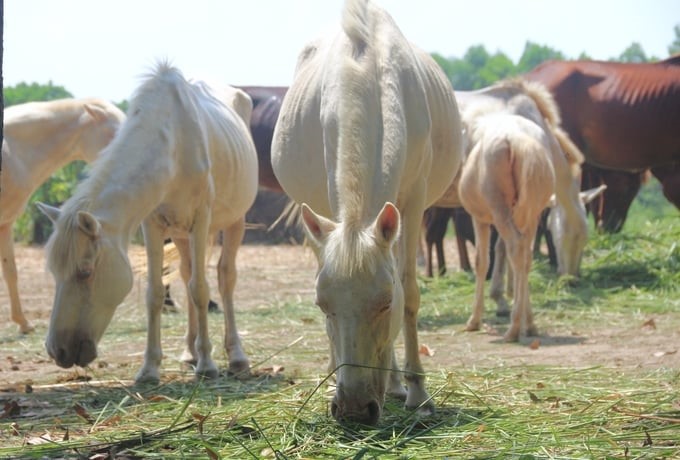
Horses can digest and absorb nutrients well from starchy and protein-rich foods such as paddy, corn, bran, etc. Photo: Pham Hieu.
A horse's gestation period lasts about 11 months, with 1 litter/year. 10–15 days after giving birth, the mare can return to estrus and continue mating. Therefore, it is necessary to pay special attention to the process of caring for stallions. During its pregnancy, the mare should be avoided from vigorous exercise, with work limitations to avoid premature birth or miscarriage. Besides, mares need to be provided with adequate nutrients during their gestation period.
Horses are herbivorous animals like buffaloes and cows, but the horse's digestive system is very different from that of buffaloes and cows. The horse's stomach is of the monogastric type and cannot digest many hard fibers. The horse's intestine is very long, especially the section connecting the small intestine with the stomach, called the caecum, which is also long and very large. Therefore, horses can digest and absorb nutrients well from starchy and protein-rich foods such as paddy, corn, bran, etc.
“Currently, people's access to scientific knowledge as well as technical advances has improved. Along with that, people’s barn conditions have been given more attention and improved. Every year, the Animal Husbandry Research and Development Center for Mountainous Zone also opens training classes on horse care and farming processes for people. In addition, the Center also diversifies methods of transmitting knowledge to people through social networking sites. The Center also built a hotline to promptly answer questions and help people solve difficulties in the process of raising and caring for horses," Mr. Ta Van Can shared.

The value of a white horse can be up to VND 50 million. Photo: Pham Hieu.
Since ancient times, white horses have always been a precious pet for farmers. According to folk experience, the nutritional value of white horse extract only ranks behind tiger bone glue.
White horse bone extract has the effect of recovering health, gas utility, and strengthening tendons, bones, and muscles. In addition to its effects on general health, white horse bone extract also has therapeutic effects on a number of specific diseases, such as arthritis, lumbar degenerative disease, and asthma, and is nutritious for children with rickets, diabetes, physiological weakness, etc.
According to Mr. Ta Van Can, because of its high medical and economic value, the demand for white horse farming among people and society is huge. If the value of a normal-colored horse is VND 25 million, the value of a white horse can be up to VND 50 million. However, many people with economic potential and large amounts of capital are willing to invest in raising white horses.
“However, high value comes with great risk. Investing large sums of money to raise white horses means that people must take better care of them and cannot let them work as hard as colored horses to avoid affecting their health," the leader of the Animal Husbandry Research and Development Center for Mountainous Zone recommended.
In Vietnam, the number of white horses is very small, only accounting for about 5–10% of the total number of horses in the country, so they are at very high risk of extinction. Therefore, the Animal Husbandry Research and Development Center for Mountainous Zone has been assigned by the Ministry of Agriculture and Rural Development to preserve the genes of the white horse breed since the early 2000s. As of now, the Center has been coordinating and supporting people in keeping genes and breeding purebred white horses, with a number of over 30 individuals in Bac Kan, Lang Son, and Lao Cai.
Mr. Ta Van Can said that in the period 2004–2006, realizing that the need for horse racing activities was huge, the Animal Husbandry Research and Development Center for Mountainous Zone researched crossing a horse breed to serve the horse race in particular and for the sport and tourism field in general.
Accordingly, the Center imported racehorse semen from Germany and crossed it with a hybrid horse breed with 25% Kabardin blood to create a horse breed with three blood lines, of which 50% is German racehorse blood, with the advantages of a strong, muscular body, high speed, and running strength and endurance.
Translated by Huyen Vu Thu

(VAN) Vietnam’s TH Group officially put its high-tech fresh milk processing plant into operation in the Russian Federation, marking a historic moment as the first TH true MILK cartons were produced in Russia.

(VAN) Use of high-quality broodstock and biotechnology is regarded as the most effective approach to ensuring sustainable and economically viable shrimp aquaculture ahead of climate change and the emergence of increasingly intricate disease patterns.

(VAN) Carbon farming is a form of agricultural practices that helps absorb more greenhouse gases than it emits, through smart management of soil, crops, and livestock.

(VAN) This is a key content of the Memorandum of Understanding recently signed between the Vietnam Fisheries Society and Kunihiro Inc of Japan.
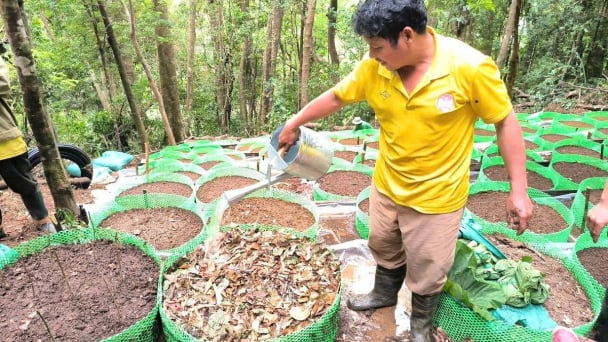
(VAN) To achieve the goal, local authorities and businesses in Kon Tum province have fully prepared the necessary conditions for the new Ngoc Linh ginseng planting season.
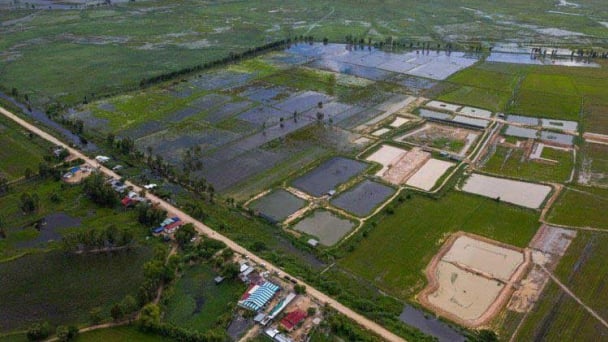
(VAN) Jiangsu province is gearing up to host training programs in Phnom Penh, the capital of Cambodia, this year to establish the Fish and Rice Corridor.
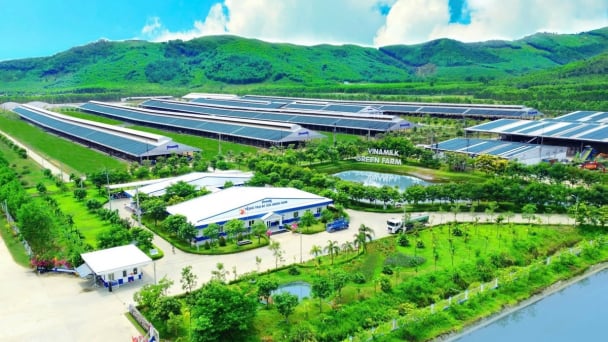
(VAN) Le Hoang Minh, representing Vinamilk, shared the company's experience in energy saving and green energy transition for production at a workshop held during the P4G Summit.